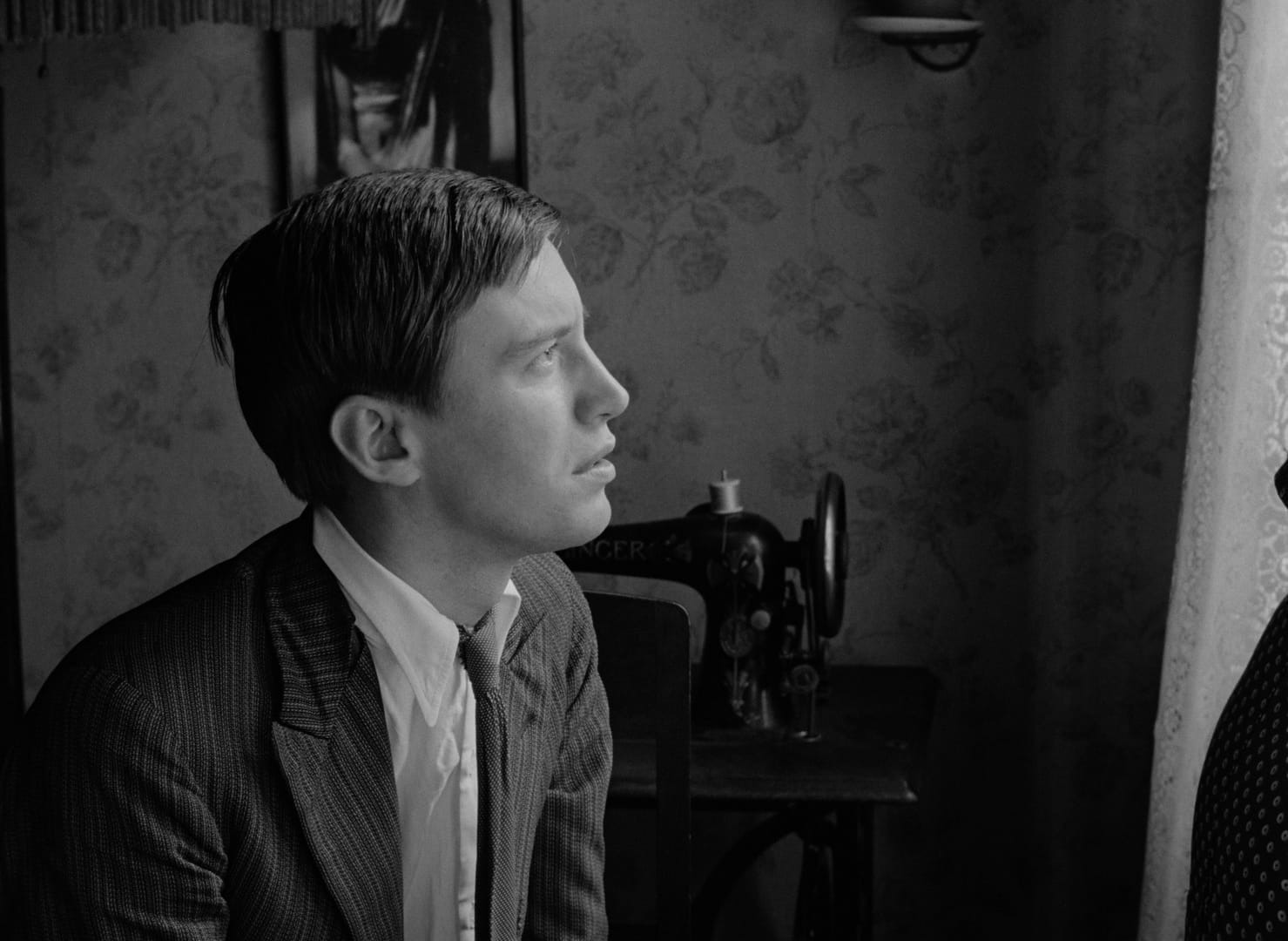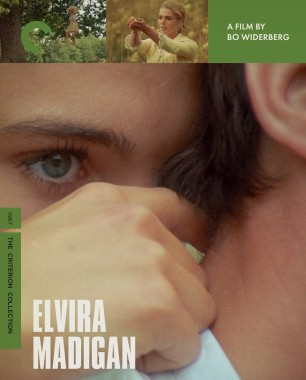Bo Widerberg’s New Swedish Cinema: Another Sweden

In 1962, the young Bo Widerberg threw a grenade into the complacent waters of Swedish cinema. It came in the form of four articles in the evening newspaper Expressen—followed by a book version titled Vision in Swedish Film—in which Widerberg castigated the conventions of his country’s film culture. “It was a protest,” he later said. “Every new Swedish film was a disaster; it had absolutely no connection with modern society.” He felt that his national cinema had fallen into a dull, if technically proficient, series of “constructed” studies of modern life, lacking both immediacy and the “observed” realism emerging in Britain, France, and Italy. Even the towering Ingmar Bergman could not escape the lash: Widerberg accused him of nourishing the myths that had developed abroad regarding Scandinavian cinema as a whole—that it was concerned only with spiritual anguish and individual passions. He reproached Bergman for his “vertical films,” in which man is either humbled or exalted in the eyes of a Christian God, and thus removed from the social landscape of the period.
Bergman wrote an open letter to Expressen, responding in somewhat indifferent terms to Widerberg’s tirade, even agreeing that inspiration had run dry in Swedish cinema. “Swedish film is today a ravaged country,” he concluded. “If you want to build something together with us, who have been successful for many years, you are welcome.” From then on, Bergman and Widerberg tolerated each other in a state of armed neutrality.
At the time of the Expressen exchange, Bergman’s friend Harry Schein was about to establish the Swedish Film Institute. Thanks to his persistence, in 1963 the Swedish government would decide to subsidize creative filmmaking with money that had hitherto been levied as an “entertainment tax” on movie tickets, furnishing aspiring filmmakers with sufficient funds to take their first steps in the profession. A new generation of young directors came to the fore in the years that followed. Widerberg was regarded by his contemporaries as a first among equals, alongside Vilgot Sjöman (the I Am Curious films), Jan Troell (Here Is Your Life), Jörn Donner (A Sunday in September), Mai Zetterling (Loving Couples), and Jonas Cornell (Hugs and Kisses). Widerberg’s star rose as the 1960s unfolded, and he would go on to make such warmly acclaimed films as Joe Hill (1971), The Man on the Roof (1976), and The Serpent’s Way (1986), working steadily until his death in 1997, at the age of sixty-six. The films he made in his first decade of directing, however, remain the finest of his career.
Widerberg and Bergman shared one unmistakable trait: both men drew heavily on the turmoil of their private lives for inspiration. By the time Widerberg had embarked on his first feature film, The Baby Carriage (1963), he was already on his second marriage, and he would have various extramarital liaisons in the years to come (one with Inger Taube, who acted in both The Baby Carriage and, two years later, Love 65). Each of these relationships furnished him with dialogue and situations that give his cinema an acutely personal dimension, most notably in Love 65, the story of a frustrated film director seeking gratification outside his marriage. Widerberg’s own youth in the port city of Malmö, in southern Sweden, also helped him bring authenticity to such early works as The Baby Carriage and Raven’s End (1963).
Widerberg had left school early, and worked first in a hospital and then on the night desk of a small provincial newspaper. He yearned to express himself through writing, and in his early twenties published novels and stories like Autumn Term and the best-selling collection Kissing. By the close of the 1950s, he had established himself as a film critic in the pages of Expressen and the literary monthly BLM. He had even tried to collaborate with Bergman, suggesting to him that they should adapt three of the short stories in Kissing. Bergman, then preoccupied with his stage productions at Malmö City Theatre, showed Widerberg’s draft to his friend and mentor at leading Swedish studio Svensk Filmindustri, Carl-Anders Dymling, but it aroused no enthusiasm on Dymling’s part.
In 1962, the same year he published Vision in Swedish Film, Widerberg made his debut with a short film for television titled The Boy and the Kite, written and directed in partnership with Troell. The film describes a day in the life of Arild, a sensitive young child whose sixth birthday is disrupted by his father’s forgetfulness and his mother’s impending childbirth. Little Arild embarks on a day of discovery, not least kite flying. Troell’s luminous cinematography, the music by Antonio Vivaldi (undoubtedly Widerberg’s contribution), and the relationship between father and son all offer a preview of the themes that run through the work of both Widerberg and Troell, the two finest Swedish filmmakers of their generation. Soon afterward, Gustav Scheutz, the boss of the Europa Film studio, agreed to fund Widerberg’s The Baby Carriage.
From the outset, filmmaking was a family endeavor for Widerberg. His young daughter Nina appeared in four of his early features; his father-in-law was the production designer on Raven’s End, while Vanja Nettelbladt, his wife from 1954 to 1973, worked as a script assistant. His first son, Martin, appeared in Ådalen 31 (1969). His younger son, Johan, had roles as a child in The Man from Majorca (1984) and The Serpent’s Way, and as a young man in All Things Fair (1995). Obstinate, misanthropic, often irascible, and capricious in love, Widerberg nonetheless remained intensely loyal to his friends and collaborators. He called on a mix of professional and amateur players. The Swedish heartthrob of the time, Tommy Berggren, appeared in six of the first seven features directed by Widerberg. Stalwarts of Swedish theater such as Anita Björk, Keve Hjelm, and Roland Hedlund appealed to him as much as neophyte talents like seventeen-year-old Pia Degermark (1967’s Elvira Madigan), eighteen-year-old Marie De Geer (Ådalen 31), and twenty-one-year-old Evabritt Strandberg (Love 65).
The Social Democratic Party had been in power in Sweden since 1932 (and would only be defeated in 1976), and while this had led to immense reforms and advances in welfare and living conditions, the party’s hegemony had, by the sixties, induced a kind of complacency that infuriated Widerberg and his committed colleagues. Although the first important milestone in Swedish cinema, Victor Sjöström’s Ingeborg Holm (1913), had savagely attacked the poor laws then in force, overtly political films had been rare in Sweden, with the exception of Alf Sjöberg’s They Staked Their Lives (1940) and Hampe Faustman’s When the Meadows Bloom (1946) and Foreign Harbor (1948). Escapist drama and, of course, Bergman’s intensely personal world had then dominated Swedish screens until Widerberg made The Baby Carriage, which appeared in March 1963. Here was an angry film, about the plight of a single mother, that responded to the times, in tune with the quest for social justice and political change that distinguished the British cinema of the early sixties.
Like his contemporaries Sjöman, Troell, and Zetterling, Widerberg had discovered the French New Wave. While admiring Jean-Luc Godard, he found him too cerebral, and so he—the most emotional of men—felt a greater kinship with François Truffaut. He also respected the political engagement and integrity of British directors like Lindsay Anderson, Tony Richardson, and Karel Reisz. He loved John Cassavetes’s iconic Shadows, which came out in Sweden in May 1962, just before Widerberg agreed to make The Baby Carriage for Europa Film. Widerberg watched it twice in succession, and even as late as The Man on the Roof, he was telling friends how Cassavetes had taught him to film the world as it really was. The jazz sequences in The Baby Carriage pay direct tribute to Shadows.
The films in this set form the crucible in which Widerberg’s passion and commitment were forged. Improvisation and spontaneity represented for him a sharpened reality. In The Baby Carriage, for example, Berggren’s Björn tries to impress Taube’s Britt by getting a prize out of a vending machine on the street, a scene that Berggren developed, while the camera was turning, into a revealing comment on his character’s personality. On Elvira Madigan, Widerberg worked from a twenty-five-page script, without dialogue. He gave Berggren and Degermark their lines just a few minutes prior to shooting, so as to endow them with an immediacy that still seems fresh today.
Young or middle-aged, rich or poor, women in Widerberg’s world live in the shadow of a male-dominated society. Some, like Britt in The Baby Carriage, Hedvig in Elvira Madigan, and Anna in Ådalen 31, find their innocence exploited—though Britt rejects convention and does manage to take control of her life, with a newborn baby at her side. Widerberg’s depictions of the struggle to cope with abortion, pregnancy, and even desertion in these early works are a comment on both patriarchal and class structures in Swedish society. Other women characters, such as the mother in Raven’s End and Karin in Ådalen 31, have difficulty in escaping the relentless routine of working-class existence. As Anders, the son, says in Raven’s End, “If you shout loud enough, someone’s bound to hear you. But they won’t understand what you’re saying.” Like other romantic artists, Widerberg sometimes painted his women in tender, Pre-Raphaelite terms. The female personalities in later works, such as The Serpent’s Way and All Things Fair, are more nuanced and sturdier in their struggle against masculine domination.
The Baby Carriage
The main character of The Baby Carriage, Britt, is a heroine of the sixties, shorn of the puritanism and superstition that generally characterized Swedish cinema up to that point. She finds herself with two boyfriends. Robban (Lars Passgård) is a pop-music bandleader who has no compunction about sleeping with Britt and is at a loss when she becomes pregnant. Björn is shy, kindly, and inhibited. Not since Bergman’s Summer with Monika (1953) had a Swedish film addressed so well the pace and strain of contemporary life. As Björn reflects, “Sweden is like a fur hat with moths in it.” Cheeky-looking yet phlegmatic and swept by melancholy, Björn hovers just beyond Britt’s grasp, and in the end she must opt for Robban and his clumsy sympathy.
Widerberg’s men and women find themselves continually faced with a moral choice, but their morals are not necessarily those of conventional society. They are more fundamental, arising from the pressures of proletarian life. Björn’s mother, for example, embraces another man in the sight of her son, but her infidelity seems at odds with her routine of returning each day from work, donning her housecoat, and beginning the round of chores—with a resignation that Widerberg clearly abhors. Britt manages to rise above this subservience to social convention, despite the risks that her courage entails and despite an abiding need to interact with her community. Widerberg may at heart have been an individualist, but he recognizes the need to live and function within some kind of fellowship. He once confessed that “morals are highly important to me. In my novels, I was a terrible moralist, and even if I no longer want to judge, I’m still worried by sharp and unexpected differences of opinion.”












